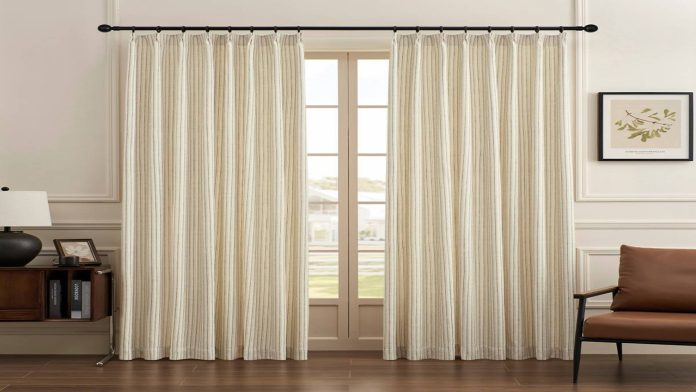When it comes to decorating small rooms, every design choice matters. One simple yet effective technique to create the illusion of more space is through the use of striped designs. Whether you’re working with narrow hallways, compact living rooms, or small bedrooms, the strategic use of stripes can transform your space. This article explores how striped designs can visually expand small rooms and offer a more open, airy feel.
The Power of Stripes in Interior Design
Stripes have long been a popular choice in interior design for their ability to manipulate space. By playing with the orientation and scale of stripes, you can drastically change the perception of a room. Horizontal, vertical, and diagonal stripes each bring their own visual effect, making them incredibly versatile for enhancing any space. Their powerful ability to influence our perception of space makes them an excellent design tool for small rooms.
How Horizontal Stripes Create the Illusion of Width
One of the most common ways to use stripes in a small room is through horizontal stripes. These lines work to make a room appear wider by breaking up vertical walls. Horizontal stripes can balance the proportions of narrow rooms, making them feel more expansive. Whether you choose bold, contrasting stripes or subtle, neutral tones, this technique can add depth and width to a space that would otherwise feel cramped.
The Role of Vertical Stripes in Enhancing Ceiling Height
In contrast, vertical stripes have a different effect. By drawing the eye upward, they create the illusion of height and make the ceiling feel taller. This is particularly useful for small rooms with low ceilings, where vertical stripes can elongate the walls and give the room an airy, open atmosphere. Tall, narrow rooms can benefit greatly from this optical illusion, making them feel more expansive both in height and depth.
Stripes and Color Choices: Enhancing the Illusion
The color of your stripes also plays a crucial role in how they affect the perception of space. Lighter shades such as pastels or whites reflect light, making a room feel brighter and more open. Darker stripes, on the other hand, add depth and can be used strategically to create contrast or highlight certain areas of the room. When incorporating striped curtains into your décor, consider using lighter stripes for smaller spaces to maintain an open feel, or experiment with bolder stripes for more dramatic visual effects.
Practical Tips for Using Stripes in Small Rooms
When working with stripes in small rooms, less is often more. While you can use striped patterns on walls, rugs, and even striped curtains, it’s important to keep the rest of your décor minimal. Overcrowding a room with too many patterns can lead to visual clutter, so balance your stripes with simple, solid-colored furniture and accessories. Choose one or two areas to showcase stripes and let the rest of the room breathe.
Conclusion
Incorporating striped designs into your home décor is an excellent way to create the illusion of more space in small rooms. Whether you use striped curtains to frame your windows or apply horizontal and vertical stripes to the walls, the key is to experiment with patterns and colors to enhance the feeling of openness. By using stripes strategically, you can make even the smallest rooms feel more spacious and inviting.














